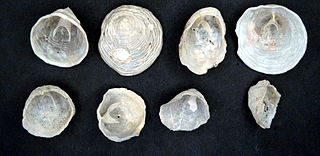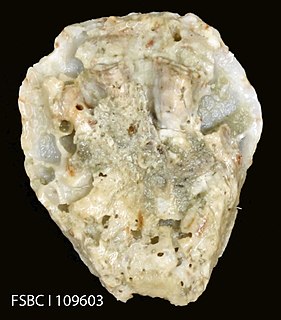
Legio X Equestris, a Roman legion, was levied by Julius Caesar in 61 BC when he was the Governor of Hispania Ulterior. The Tenth was the first legion levied personally by Caesar and was consistently his most trusted. The name Equestris was applied after Caesar mounted legionaries from the Tenth on horses as a ruse in a parley with the German King Ariovistus in 58 BC because he did not trust his Gallic cavalry auxiliaries from the Aedui tribe. Legio X was famous in its day and throughout history, because of its portrayal in Caesar's Commentaries and the prominent role the Tenth played in his Gallic campaigns. Its soldiers were discharged in 45 BC. Its remnants were reconstituted, fought for Mark Antony and Octavian, disbanded, and later merged into X Gemina.

Legio X Gemina, was a legion of the Imperial Roman army. It was one of the four legions used by Julius Caesar in 58 BC, for his invasion of Gaul. There are still records of the X Gemina in Vienna in the beginning of the 5th century. The legion symbol was a bull. Early on in its history, the legion was called X Equestris (mounted), because Caesar once used the legionaries as cavalry.

Nyon is a municipality in Nyon District in the canton of Vaud in Switzerland. It is located some 25 kilometers north east of Geneva's city centre, and since the 1970s it has become part of the Geneva metropolitan area. It lies on the shores of Lake Geneva and is the seat of Nyon District. The town has a population of 21,452 and is famous in the sporting world for being the headquarters of the Union of European Football Associations (UEFA) and the European Club Association (ECA). It is connected to the rest of Switzerland by way of the Route Suisse, the A1 Motorway and the railways of the Arc Lémanique.

The knight anole is the largest species of anole in the Dactyloidae family. Other common names include Cuban knight anole or Cuban giant anole, highlighting its native country, but it has also been introduced to Florida. In its native Cuba, this large anole is called chipojo.
Lausonius Lacus or Lacus Lausonius was an ancient name referencing a town or region in the country of the Helvetii about Lake Geneva; it was also an ancient name of the lake itself.

Phalaenopsis equestris is a flowering plant of the orchid genus Phalaenopsis and native to Philippines and Taiwan. The inflorescence has 10 to 20 flowers of about 25 mm (1 in) diameter.

Fabrezan is a commune in the Aude department in southern France.

Merodon equestris is a Holarctic species of hoverfly. Like many other hoverflies it displays a colouration pattern similar to a stinging insect as an evolutionary defense mechanism. Other syrphid bee mimics are Mallota, Arctophila, Criorhina, Pocota and Brachypalpus. Merodon species are distinguished from these by the very strong hind femora, which bear a large triangular projection on the underside near the tip. It flies in low vegetation while the other bumblebee mimics prefer higher vegetation layers.

Cheilea equestris is a species of small limpet-like sea snail, a marine gastropod mollusk in the family Hipponicidae, the hoof snails.
Scamaphis is a genus of mites in the family Eviphididae. There is at least one described species in Scamaphis, S. equestris.
Cheilea is a genus of small limpet-like sea snails, marine gastropod mollusks in the family Hipponicidae, the hoof snails.

Noviodunum or Colonia Iulia Equestris was a Roman era settlement in what is now Nyon in the Canton of Vaud in Switzerland.
Hipparchicus is one of the two treatises on horsemanship by the Athenian historian and soldier Xenophon (circa 430–354 BC). Other common titles for this work include The cavalry commander and The cavalry general. The other work by Xenophon on horsemanship is Περὶ ἱππικῆς, Perì hippikēs, usually translated as On horsemanship, De equis alendis or The Art of Horsemanship. The title De re equestri may refer to either one of the two works. Hipparchicus deals mainly with the duties of the cavalry commander (hipparchus), while On horsemanship deals with the selection, care and training of horses in general.

Lygaeus equestris, common name Black-and-Red-bug, is a species of ground bugs belonging to the family Lygaeidae, subfamily Lygaeinae.

The Italy national equestrian team represents Italy in International Equestrian competitions such as Olympic Games or World Equestrian Championships.

Ostrea equestris, commonly known as the crested oyster or horse oyster, is a species of bivalve mollusc in the family Ostreidae. It can be found along the Atlantic coast of North and South America, ranging from Virginia to Patagonia.
The Temple of Fortuna Equestris was a temple dedicated to the goddess Fortuna in ancient Rome. Its precise location is unknown, though Vitruvius states it stood near the Theatre of Pompey. No evidence of it remains after 22 AD, meaning it was probably lost in the fire of 21 AD, which also damaged the Theatre of Pompey.
Griburius equestris is a species of case-bearing leaf beetle in the family Chrysomelidae. It is found in North America.











